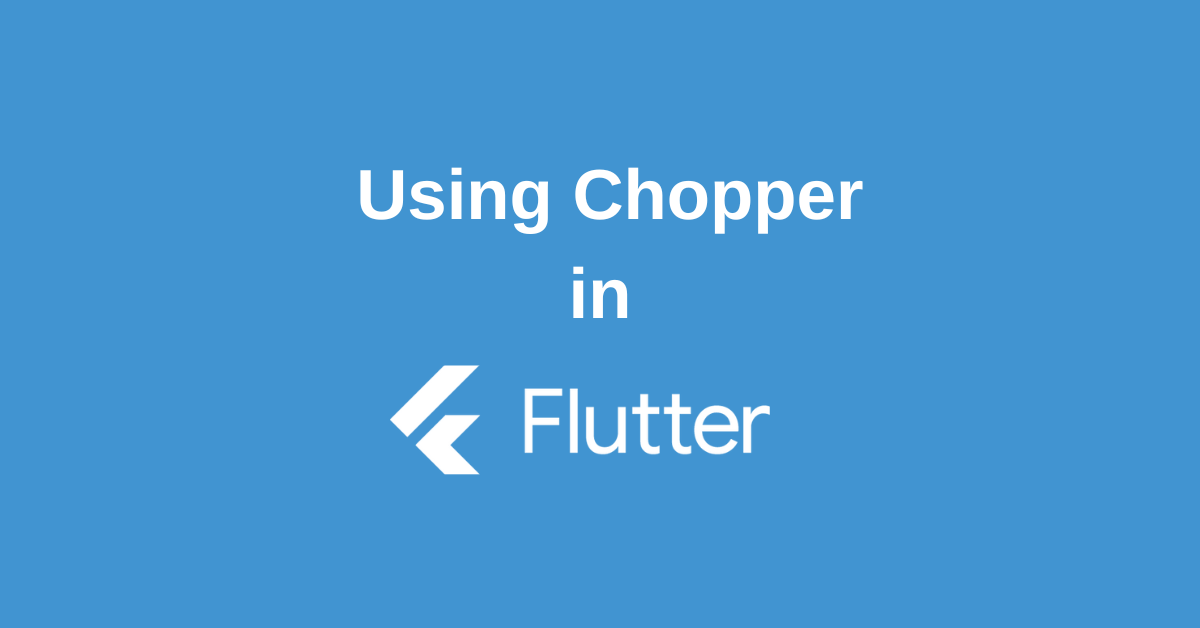When building modern Flutter apps, seamless communication with APIs is a must. Handling network requests, parsing JSON, and managing boilerplate code can quickly become repetitive and error-prone. This is where Flutter Chopper comes in. Chopper is a powerful HTTP client generator that takes care of the heavy lifting, allowing you to focus more on your app’s logic rather than writing endless networking code. With its clean structure, built-in serialization support, and easy integration, Chopper makes API handling both simple and scalable.
Setting Up Flutter Chopper in Your Flutter Project
Getting started with Chopper requires adding specific YAML dependencies to your project. You’ll need to import the Chopper package along with the code generation tools that make the magic happen.
dependencies:
chopper: ^7.0.0
http: ^0.13.0
dev_dependencies:
chopper_generator: ^7.0.0
build_runner: ^2.4.0
json_annotation: ^4.8.0
This setup provides everything required to get Chopper running in your Flutter project. The chopper_generator takes care of generating the necessary code, while build_runner handles executing the code generation commands.
Once the dependencies are in place, you can start creating your Chopper service files inside the lib folder. The usual approach is to define your API endpoints in an abstract class, and then let Chopper automatically generate the implementation for you.
Building Your First Chopper Service
Let’s build a simple Flutter Chopper service to showcase the capabilities of this HTTP client generator. We’ll begin by defining an abstract class that declares your API endpoints and methods, which Chopper will later use to generate the implementation.
import 'package:chopper/chopper.dart';
part 'api_service.chopper.dart';
@ChopperApi(baseUrl: '/api')
abstract class ApiService extends ChopperService {
@Get(path: '/users')
Future<Response> getUsers();
@Post(path: '/users')
Future<Response> createUser(@Body() Map<String, dynamic> user);
static ApiService create([ChopperClient? client]) {
return _$ApiService(client);
}
}
This example shows how Flutter Chopper converts your abstract class into a fully functional HTTP client. The @ChopperApi annotation sets the base URL, while method-level annotations such as @Get and @Post define the specific HTTP requests.
After running the code generation command, Chopper produces a class that implements all your declared methods. This generated code takes care of the heavy lifting—managing HTTP requests, handling errors, and parsing responses—so you can focus on building your app.
Building Your Chopper Client
Creating a chopper client involves more than just instantiating your service. You’ll typically configure the client with your base URL, converters, and any interceptors your app needs.
void main() {
final client = ChopperClient(
baseUrl: Uri.parse('https://api.example.com'),
services: [
ApiService.create(),
],
converter: JsonConverter(),
interceptors: [
HttpLoggingInterceptor(),
],
);
runApp(MyApp(client: client));
}
With this setup, you now have a fully configured Chopper client capable of handling all your Flutter API calls. It manages the underlying HTTP client and ensures smooth coordination across all your services.
Be sure to dispose of the Chopper client when it’s no longer in use. Proper disposal helps prevent memory leaks and keeps your app running efficiently in every scenario.
Error Handling and Best Practices
When working with any HTTP client, errors and exceptions are inevitable. Chopper makes it easier to manage these situations gracefully within your Flutter apps.
A common practice is to check the response status and handle different outcomes accordingly. This could mean retrying failed requests, displaying user-friendly error messages, or logging errors for debugging.
For consistency, consider implementing a centralized error-handling strategy. You might use custom exception classes or set up interceptors to automatically handle common error scenarios across your app.
Finally, keep in mind that users may not always have a stable internet connection. In production apps, it’s essential to detect connectivity issues and ensure your app fails gracefully instead of breaking the user experience.
Conclusion
By using Flutter Chopper, you not only reduce the amount of boilerplate code but also gain a cleaner, more maintainable networking layer for your applications. Whether you’re working on small projects or large-scale apps, Chopper ensures that API integration remains efficient, structured, and developer-friendly. In short, it turns a once tedious process into an effortless experience—making your Flutter development journey faster and more productive.
Wanna Level up Your Flutter game? Then check out our ebook The Complete Guide to Flutter Developement where we teach you how to build production grade cross platform apps from scratch.Do check it out to completely Master Flutter framework from basic to advanced level.

